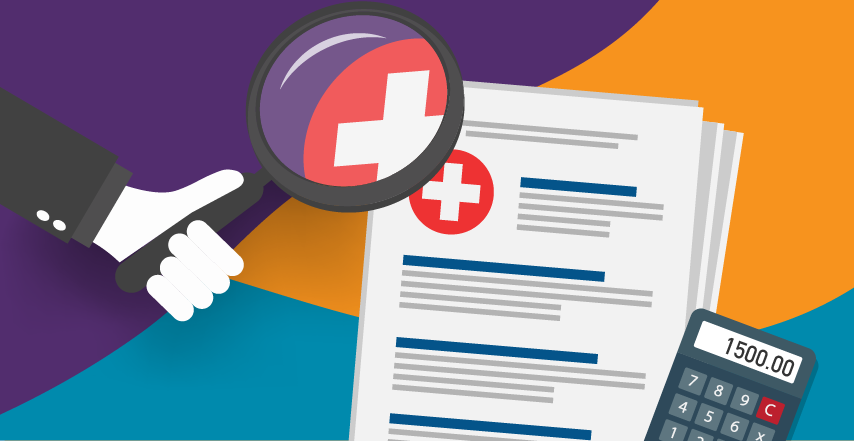Disclaimer: Please note that the materials and descriptions contained in this communication are for informational purposes only and do not constitute legal advice. Please continue to rely on the advice of your counsel regarding state and local laws and regulations as they pertain to your business.
The No Surprises Act
The No Surprises Act, which went into effect on January 1, 2022, protects people from receiving surprise medical bills. It also establishes dispute-resolution processes for payment disputes. The protections are similar to those already enjoyed by patients with Medicare and Medicaid.
The Act is intended to protect people from situations like the following, which are a growing problem: Before receiving surgery, the patient confirms that the hospital and surgeon are in-network. The surgery is a success, but three months later the patient gets a bill for $10,000 — the anesthesiologist was out of network, and the patient’s insurance plan didn’t cover the out-of-network cost.
The No Surprises Act covers hospitals and in-patient care, as well as outpatient health care providers.
Complying With the No Surprises Act
As currently outlined in the Act (early February of 2022), the process seems straightforward. There are many aspects, though, that aren’t clear. Our suggestions for best practices in these vague areas are noted.
Provide notice to individuals
You must deliver a notice in plain language to patients specifying their rights under the Act. CMS has posted a model disclosure notice along with instructions here.
Best practice: Provide the notice for each episode of care. Follow the same procedures you would for other required notices. Include in clear language that they have a right to a good-faith estimate (GFE).
Provide notice to the public
You must post the notice on your website and in at least two prominent places in your office.
Best practice: Display the notice where licenses are typically displayed and where billing is discussed and done. Include in clear language that they have a right to a GFE.
Ask about insurance
When a patient schedules an appointment with you, ask if they will be using insurance (in-network or out-of-network).
- If yes, document it in the patient’s file — no further action is needed. This is true even if the insurance plan uses a third party to provide the benefit.
- If no, a GFE is required. CMS has posted an example here. You must ask if they want a digital or paper copy and then provide it.
Good faith estimate rules
Your patients may file a dispute when the charges on the bill are at least $400 greater than those on the estimate. Furthermore, you must provide:
- A reasonably accurate estimate of the charges
- An estimate every 12 months for recurring services
Best practice: Build a patient-signature line into your GFE template so you have a way to demonstrate compliance.
What to Expect in the Coming Months
Enforcement will most likely focus initially on hospitals and in-patient facilities, so outpatient health care providers will probably have plenty of time to get their ducks in a row. In the meantime, different groups will offer feedback or express concern, resulting in possible clarification and exemptions.
Clarifications
As already noted, many facets of the Act need clarification. This might lead to additions or even future legislation.
Exemptions
AAA is already hard at work pushing for enforcement delay — or even exemption — for small practices, as it will be needlessly overwhelming and exhaust resources. They are also seeking greater transparency in subsequent regulatory proceedings, as the patient dispute process isn’t clear, nor is enforcement of the Act.
Beyond the Basics
The previous sections provide the basics you need to know. Here we’ve gathered some best practices for more nuanced situations. When in doubt, though, overcompliance is best.
Insurance only pays a portion
A perfect example of the grey area. Per the Act, just document that they’ll be using insurance. If you do have the time and resources, it’s safer to provide a GFE.
A patient uses insurance for testing but self-pays for devices
Trust your gut. Per the rule, simply document it. It never hurts, though, to get ahead of the Act and provide a GFE for the portion not covered by insurance.
A patient says they have insurance but doesn’t provide proof
Don’t assume they’re insured. Provide a GFE unless you have concrete, verifiable member information in hand. An intake form with the details or a scan of their member card counts as documentation.
Hearing aid purchase agreements
Compare your purchase agreement to the example estimate form from CMS. If what they require matches what you provide, your form will suffice as an estimate.
Services not covered by insurance
Inform the patient in writing that it’s not covered and what the likely charge will be.
The privacy policy states that the patient agrees to cover anything insurance doesn’t pay for
Better to assume the provision isn’t in there and act accordingly.
Out-of-network insurance balance billing
Provide an estimate.
Insurance didn’t provide their allowable, and the surprise billing is >$400 allowed difference
For now, you’re protected under the act if it’s properly documented.
VA patients
To be safe, treat VA as out of pocket and provide a GFE.
Referred services, such as an MRI
The bill for a referred service would come from that provider. You’re not the one billing the patient for that service — for example, an MRI — so your GFE shouldn’t include it.
The patient doesn’t use email
The effective date would be the postmark.
This is a bird’s-eye view of the Act to get you going in the right direction. For more details, consult the CMS page for this act, https://www.cms.gov/nosurprises.

